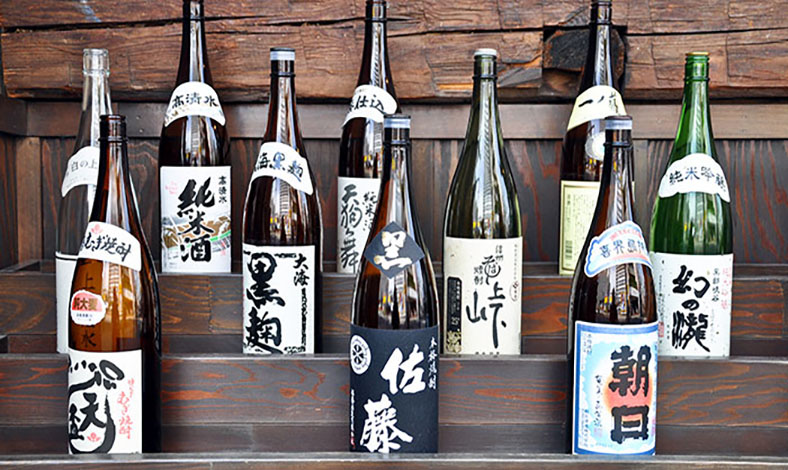
We are happy to announce that you can now find sake, including well-known names, on the iDealwine website. To mark this occasion, we are taking a closer look at sake. By the end of this article, we hope you’ll have increased your knowledge of sake enough to start making informed purchasing decisions.
What is sake?
Even if the word sake simply means an alcoholic beverage in Japanese, it has since taken on a more precise meaning. The sake we are talking about is a riced-based fermented drink made using the same method as beer, with hops or malt, resulting in an ABV between 11–18%.
How is sake made?
The methods used to produce sake are very similar to that of beer, but instead of fermenting hops and barely, rice is used. Fermentation take place with koji spore (which aids fermentation) and yeast (which are generally added).
Sake is essentially made from water and rice, but producers can make many choices when sourcing their ingredients which will affect the end product. The grains of rice can be “polished” (removing layers of the grain) to different degrees and this rice polishing ratio will be mentioned on the bottle in most cases.
The rice is washed and soaked before the grains are steamed, which allows the rice to have a firmer outer texture. Once the rice has been steamed, it must be cooled before production can continue. The next steps take place in the koji muro, a room where the rice is left for the koji spores to come into contact with the grains. Fermentation follows in a tank in which the rice, koji, water and yeast has been placed. This last for several days and more rice, koji and water will be added regularly. At the end of fermentation, the mixture is pressed and filtered before being bottled.
What flavours does sake have?
There are three broad categories for sake and they each have their own distinguishing characteristics.
- Traditional sakes: Their flavour profile is delicate with either aromas of grains or a profile that is very similar to water in terms of texture and subtleness.
- Modern sakes: Created using more precise, modern techniques, these sakes often have delicate floral and fruity aromas (due to the yeasts and the often very polished grains that are used). They are more aromatic and offer a longer finish than traditional sakes.
- Natural sakes: Produced with natural yeasts and fairly unpolished grains, they possess aromas from fermentation, undergrowth and mushrooms. They are generally less powerful.
Honjozo (sakes which have had natural alcohol added to them) do not contain that much alcohol or have more pronounced flavours than other types of sakes. As for Junmai sakes, they can vary a lot but are often considered more refined than honjozo.
How to serve sake?
There are a few different glasses for sake. Some sakes can be served in the traditional Japanese coupes, while others can be served in wines glasses. It’s best to check the back of the bottle to see what the producer recommends. And when it comes to service temperature, sake can be served cold or warm, between 5°C et 55°C, depending on the type of sake. The temperature influences the perceived balance of the drink (the alcohol can become more or less pronounced). In Japan, sake is often enjoyed warm.
What are some pairing ideas for sake?
Here are different pairings depending on the type of sake you choose:
- Sparkling and modern (ginjo-ka) sake works really well as an aperitif or when pairing with certain delicate dishes such as sushi.
- Natural sakes can accompany dishes with average flavour intensity, like white meats especially when mushrooms are part of the dish as they are reminiscent of the aromas in these types of sakes.
- Traditional sakes are often paired with dishes that don’t have a strong flavour profile or aren’t too spicy or at the end of the meal to aid digestion because they possess a relatively light ensemble of aromas.



